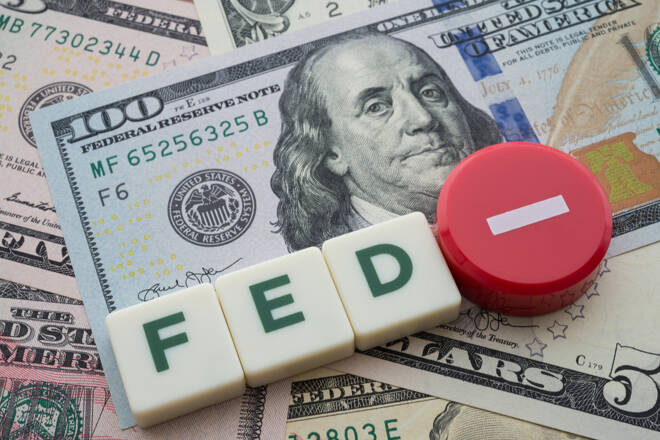Advertisement
Advertisement
Dovish-leaning Fed Minutes Fail to Dent DXY; AUD/USD Drops on Weak Wage Growth
By:
The buck remained stronger against most of its G10 peers, except the euro, despite a dovish-leaning Fed minutes release.
Key Points
- The euro held firm against the buck on Wednesday despite strong Core US Retail Sales data.
- The Fed’s July meeting minutes were dovish-leaning, but the buck was still higher against most of its G10 rivals.
- The Aussie was battered by soft wage growth figures while a hawkish RBNZ failed to support the kiwi.
Euro Holds Firm Against Buck as Traders Digest US Retail Sales/Fed Minutes
The euro held firm on Wednesday in a mixed day for currency markets, with the single currency last trading higher by about 0.1% versus the US dollar and the best performing G10 currency. EUR/USD was unable to break back above 1.0200, but remained in the upper 1.0100s throughout the session as traders digested the latest US Retail Sales figures and Fed meeting minutes.
The Retail Sales figures, despite revealing zero MoM growth in headline sales last month, revealed strength in core consumer spending, which boosted the buck against most of its counterparts on Wednesday. The Fed minutes, meanwhile, were interpreted as somewhat dovish given 1) the Fed noting it expects the pace of tightening to slow at some point and 2) many Fed members are concerns about overtightening. The Fed lifted interest rates by 75 bps in July to 2.25-2.50% and the minutes reiterated the bank’s pledge to lift interest rates more at upcoming meetings.
Where US money markets had been pricing a 60%/40% odds split that the Fed goes with a 50/75 bps rate hike next month, in wake of the dovish minutes this adjusted to close to 40%/60%. However, the market’s broadly risk-averse mood, with global equities firmly on the back foot, meant that the buck (mostly) remained well supported, with the DXY holding above 106.50.
Another rise in long-term US bond yields saw USD/JPY rise back towards, but not quite hit fresh highs for the month around 135.00. Meanwhile, sterling reversed earlier gains against the buck, with GBP/USD last down about 0.4% in the mid-1.2000s, despite hotter-than-expected US consumer price inflation figures that will increase rate hiking urgency at the Bank of England. Analysts said a faster tightening cycle from Britain’s central bank adds to downside risks to the UK economy at a time when citizens are already being battered amid the worst cost-of-living crisis in a generation.
Aussie Struggles Battered By Weak Wage Growth, Hawkish RBNZ Fails to Lift Kiwi
The Australian dollar was the worst performing major G10 currency, losing around 1.25% on the day versus the buck after data showed a slower than expected pace of wage growth in the second quarter. The data was interpreted as lessening the need for the RBA to hike interest rates quite to aggressively at upcoming meetings, as lower wage growth reduces the risk of a so-called “wage-price spiral”. The data, which showed wage growth lagging inflation by a significant margin, will also worsen stagflation fears in Australia, which is likely weighing on demand for the Aussie.
Despite a very hawkish RBNZ policy announcement, where the bank lifted interest rates by 50 bps to 3.0% as expected and predicted rates rising to 4.0% by early 2023, which was higher than its previous forecast, the New Zealand dollar still fell on Wednesday. The broadly risk-off tone to macro trade combined with losses in its counterpart the Aussie dominated flows.
About the Author
Joel Frankauthor
Joel Frank is an economics graduate from the University of Birmingham and has worked as a full-time financial market analyst since 2018. Joel specialises in the coverage of FX, equity, bond, commodity and crypto markets from both a fundamental and technical perspective.
Advertisement
